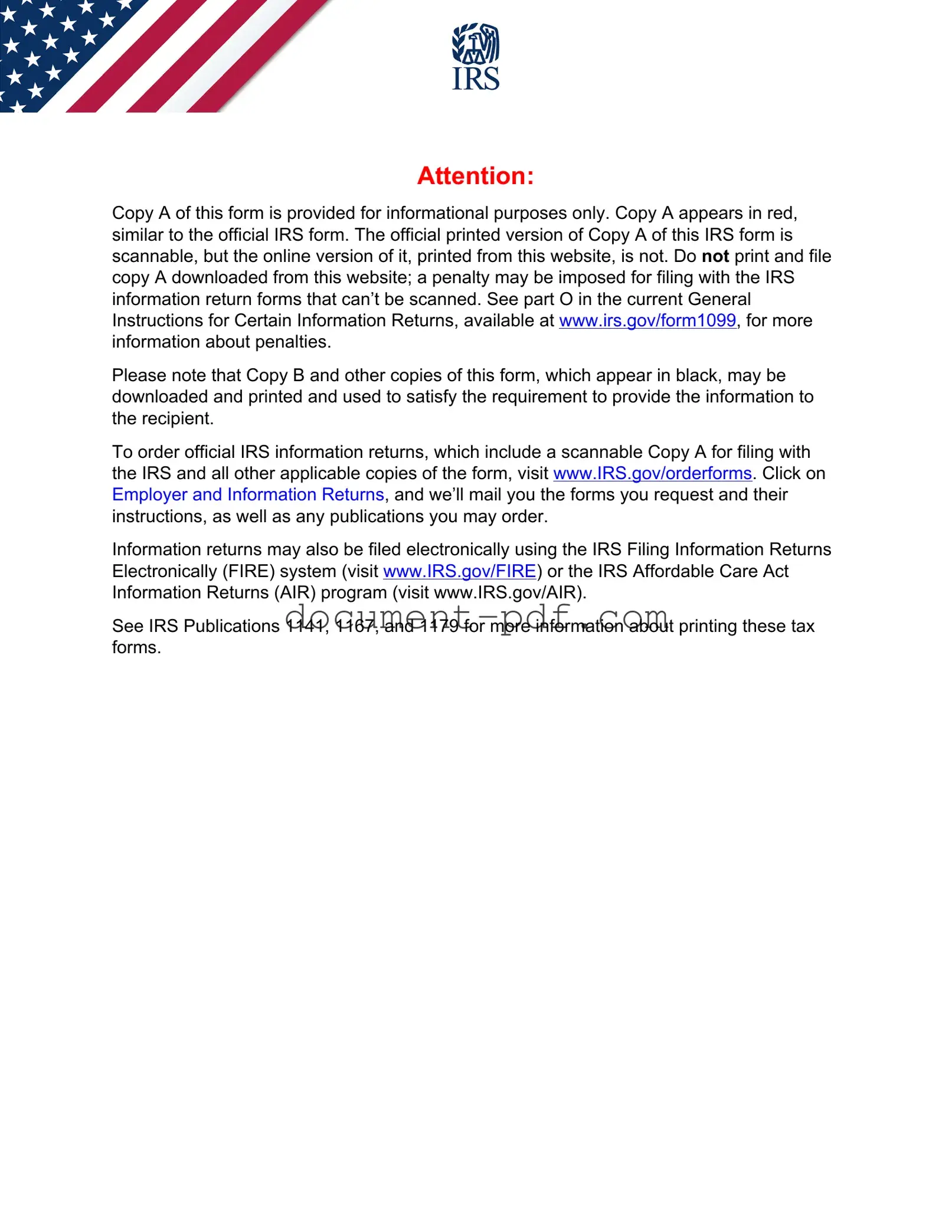The 1099-MISC form is often compared to the 1099-NEC, as both serve to report various types of income other than wages. The 1099-MISC is used to report miscellaneous income, such as rent or royalties, while the 1099-NEC specifically focuses on nonemployee compensation. This distinction is crucial for tax purposes. For instance, if a freelancer earns money for services rendered, that income would be reported on a 1099-NEC. In contrast, if a property owner receives rental payments, those would be documented on a 1099-MISC. Both forms require the payer to provide a copy to the recipient and file with the IRS, emphasizing the need for accurate reporting of income received outside of traditional employment.
The 1099-K form is another document that shares similarities with the 1099-NEC. It is used to report payment card and third-party network transactions. Businesses that process payments through credit cards or platforms like PayPal must issue a 1099-K when the gross payments exceed a certain threshold. While the 1099-NEC focuses on compensation for services, the 1099-K captures the total income received through electronic means. Both forms highlight the importance of reporting income accurately to the IRS, ensuring that all sources of income are accounted for, regardless of how they were received.
Another related form is the W-2, which is used to report wages paid to employees. Unlike the 1099-NEC, which is intended for independent contractors and freelancers, the W-2 reflects income from employment where taxes are withheld by the employer. Both forms require the payer to provide copies to the recipient and file with the IRS. However, the W-2 includes details about withheld federal income tax, Social Security, and Medicare taxes, while the 1099-NEC does not report withholding unless backup withholding applies. This distinction is essential for recipients when preparing their tax returns.
The 1099-B form also bears resemblance to the 1099-NEC in that it reports income, but it specifically pertains to proceeds from broker and barter exchange transactions. This form is used by brokers to report gains or losses from the sale of securities. While the 1099-NEC focuses on payments for services, the 1099-B is concerned with investment income. Both forms must be filed with the IRS and provided to recipients, ensuring that all income types are reported and taxed appropriately.
For those navigating the complexities of business agreements, the importance of having a proper Operating Agreement cannot be overstated. This document not only defines the roles and responsibilities of members within an LLC but also sets forth the procedures for decision-making, ensuring clarity among all parties involved. If you're seeking a streamlined way to formulate this critical agreement, you can find valuable resources at Texas PDF Templates, which offers expertly designed templates tailored for Texas businesses.
The 1099-C form is another document that parallels the 1099-NEC in its reporting function. It is used to report cancellation of debt. When a lender forgives a debt of $600 or more, they must issue a 1099-C to the borrower. This form informs the borrower that the canceled debt is considered taxable income. While the 1099-NEC deals with compensation for services, the 1099-C highlights the tax implications of debt forgiveness. Both forms play a vital role in ensuring that all income, whether earned or forgiven, is reported to the IRS.
Lastly, the 1099-S form is similar to the 1099-NEC as it reports proceeds from real estate transactions. When a property is sold, the seller must receive a 1099-S if the transaction meets certain criteria. This form provides the IRS with information regarding the sale price and any applicable gains. While the 1099-NEC focuses on income earned from services, the 1099-S centers on income generated from real estate sales. Both forms require accurate reporting to ensure compliance with tax regulations and to prevent penalties for underreporting income.






 CORRECTED (if checked)
CORRECTED (if checked)
